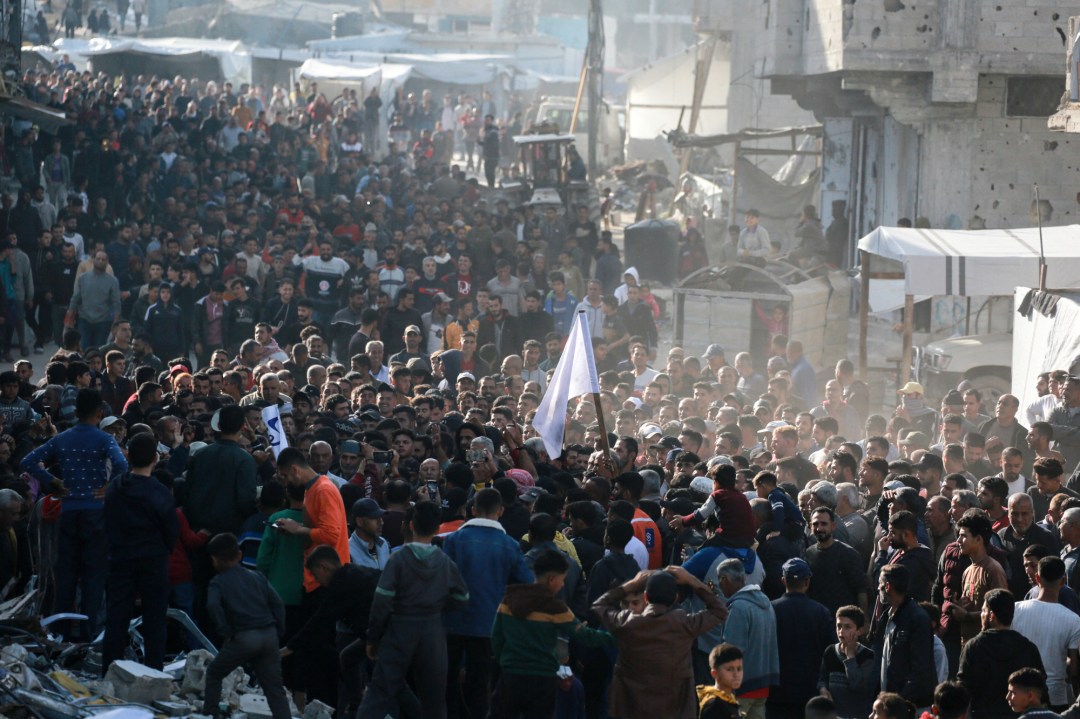A series of striking videos have emerged from the Gaza Strip over the last week. Crowds of Palestinians, chanting slogans against Hamas, have taken to the streets in a rare public display of dissent. Some have criticised the mainstream Western media for treating these images with restraint, claiming a missed opportunity to spotlight what could be interpreted as a grassroots uprising against a regime they have long failed to critically interrogate.
Others have dared to raise the point: where are the Palestinian ‘solidarity’ activists now? The same keffiyeh-clad groups that filled the streets of London, Paris, and New York waving PLO flags and denouncing Israel as ‘genocidal’, seem conspicuously quiet when confronted with images of ordinary Palestinian Arabs in Gaza protesting not against Israel, but against Hamas itself. After 17 months of ceaseless moralising, marches, and slogans, the silence is telling.
But the real question is not about them: it is about the protests themselves. What exactly do these demonstrations represent? Are we truly witnessing a moral and ideological turning point in Gaza, a long-overdue rejection of the Islamic tyranny that has gripped the enclave since 2007? Or is something more complex, more cynical, at play?
We must resist the temptation to project our own liberal fantasies onto these images. The idea that Palestinians in Gaza are suddenly casting off the yoke of Hamas in pursuit of western-style democracy and pluralism may be emotionally appealing to many, but it is dangerously naïve. In truth, many of those now seen chanting against Hamas were, until recently, its most ardent supporters: celebrating the terrorist group, abusing suspected collaborators, and justifying Hamas’s violent ideology as part of their own identity. Their opposition today is not to Hamas’s goals, but to the consequences of its failed rule and the disastrous direct effects of its bloodthirsty, genocidal attack on Israel.
The slogans themselves are revealing: ‘Hamas out for the sake of Allah,’ and ‘Hamas arhabiyah [terrorists]’ are deliberately vague. These are not sweeping denunciations of Islamic extremism. They are not rejections of the 7 October massacre, nor are they expressions of remorse for the thousands of rockets fired indiscriminately at Israeli civilians over many years or the homicide-suicide bombings and stabbings of Jews. They are an attempt to distance from Hamas as a governing entity, not as a violent movement. It is not the cause that is being rejected: but the cost of continuing to pay the price for Hamas’s strategic miscalculations.
In Israel I recently met with Idit Bar, one of the country’s leading independent researchers in the field of the Arab world and Islam. She explains that two motivations seem to drive these protests: fear and honour. Fear, first and foremost, of what lies ahead. With US president Donald Trump hinting at a future policy of (voluntary) mass population transfer, and Israel unwilling to tolerate a return to Hamas rule, many Palestinian Arabs sense the winds shifting. They recognise that Hamas’s presence is now a liability. Distancing themselves may be the only way to survive politically and physically.
The second driver is the deeply embedded cultural code of honour. Hamas cannot simply surrender or negotiate from weakness. Public pressure, even if contrived or tolerated, gives the organisation a face-saving route back to the table. In this respect, what we are seeing may not be genuine transformation, but theatre.
The latest protests in Gaza do not mark a moral revolution
Such performance is not new. Nor is the brutality with which Hamas enforces its grip on power. Videos circulating over the weekend show tied-up Palestinians being shot in the legs by Hamas operatives – punished not for collaborating with Israel, but for protesting against the group’s authority. They look just like the videos we saw months ago of Gazans being shot and beaten for attempting to access free humanitarian aid without paying Hamas’s extortionate prices. The body of 22-year-old Oday Nasser Al Rabay was left in front of his family’s home over the weekend after Hamas reportedly executed him for protesting against them.
While these scenes are deeply disturbing, displaying an animalistic barbarity of which many in the West prefer to feign ignorance, they are not surprising. We have seen them before: when Hamas first seized Gaza, throwing political rivals off rooftops; when, in recent months, Israeli forces uncovered CCTV footage of Hamas routinely torturing their own people – beatings, stress positions, and grotesque rituals of internal domination.
Yet time and again, these atrocities fail to register in the public conscience. Why? Because they do not fit the narrative. In May 2024, the ‘All Eyes on Rafah’ meme – a manufactured AI image – became one of the most popular images on Instagram, shared more than 47 million times in the space of a few days. Like all early AI ‘art’ the image was unashamedly stylised and make-believe. This artifice was not merely inaccurate, it was symbolic. It represented the broader fantasy propagated by pro-Palestinian activism in the West: a fiction of innocent, suffering people yearning only for freedom, democracy, and peace. A fiction where complexity is erased, barbarism is recast as resistance, and ideological jihadism is wrapped in the soft-focus glow of humanitarianism.
This is the great lie at the heart of modern Palestinian solidarity movements. Their moral outrage is selective, their solidarity performative. They did not march for the hostages. They do not speak out against the murder of gays and lesbians by Palestinian society. They have no interest in those who suffer under Islamic dictatorship – unless that suffering can be blamed on Israel and Jews. Their silence today is not hypocrisy. It is clarity. It reveals that for many, the cause has never truly been ‘justice’ for Palestinian Arabs. It has been the destruction of Jews and the Jewish state.
The latest protests in Gaza do not mark a moral revolution. At best, they are a flicker of pragmatism. At worst, they are stage-managed dissent designed to reposition Hamas for future negotiations. Either way, the brutality continues, the ideology remains, and the West’s willingness to believe in fairy tales prevents it from confronting the hard truth: that not every culture, not every movement, not every identity is morally equal. And that until we are ready to face that and act accordingly, we will remain blind to what is actually happening in Gaza: no matter how many eyes are on Rafah.









Comments